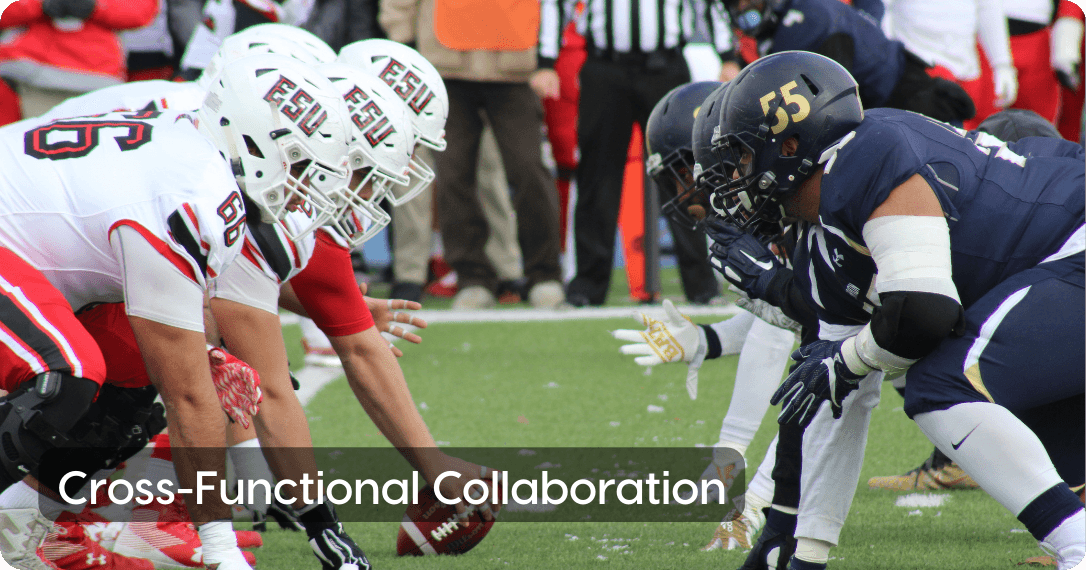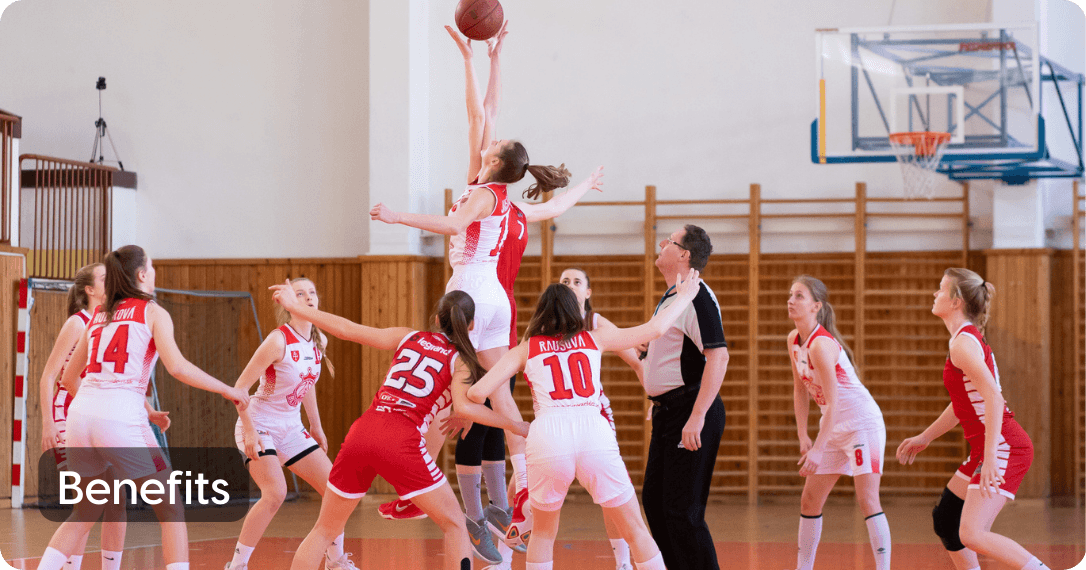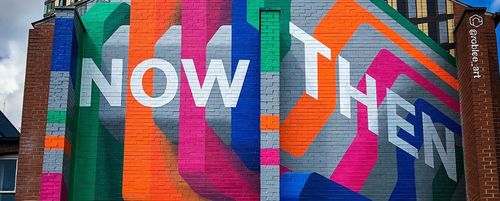

What Is Cross-Functional Collaboration and Why It Matters

24 April, 2025
Share this article
Table of Contents
Got a favorite team? Great. Now imagine them trying to win a game without ever talking to each other. That’s what work looks like without cross-functional collaboration.
So, what is cross-functional collaboration? It’s when people from different teams—like marketing, product, and customer support—work together toward the same goal. Sounds easy. But doing it well takes intention, trust, and a whole lot of clarity.
In today’s world, this isn’t a nice bonus. It’s how work gets done. Projects are more complex, timelines are tighter, and no one team has all the answers. The best solutions often come when different perspectives come together. Not just when it’s convenient but as a habit.
In this article, you’ll learn:
- What cross-functional collaboration is
- Why Cross-Functional Collaboration Matters
- Benefits of Effective Cross-Functional Collaboration
- Challenges of Cross-Functional Collaboration
- Strategies to Foster Effective Cross-Functional Collaboration
- Examples of Successful Cross-Functional Projects
- How to Measure Success
Because collaboration should feel like progress—not extra work.

What Is Cross-Functional Collaboration
Ever tried planning a trip with friends who all want different things? One’s into hiking, one wants museums, and one just wants to relax on the beach. Now imagine getting them to agree on one plan. That’s a bit like cross-functional collaboration: it’s tough—but when it works, it’s magic.
In simple terms, cross-functional collaboration means people from different departments working together toward the same goal. Picture product, sales, design, and legal all at the same table launching a new feature. Or operations, finance, and HR aligning to improve the employee experience. It works at any scale, whether you’re a small startup or a global company.
In a traditional setup, teams stay in their own lanes. Marketing works with marketing. Finance sticks to finance. Projects often move in silos, one step at a time. Cross-functional collaboration flips that. Instead of passing work from team to team, you bring everyone in from the beginning. You share goals, insights, and decisions as you go.
This kind of setup helps teams skip the slow back-and-forth that usually comes with cross-department handoffs. It gives you more visibility, better alignment, and often, better results. Everyone’s in the loop. Everyone’s voice matters.
But it’s not just about sitting side by side. It’s about actually working together. That means:
- Being clear about the goal
- Valuing different perspectives
- Staying open to other ways of thinking
You can use this approach for major strategic projects or small everyday tasks. What really counts is that people from different areas show up with the same purpose. Not just ticking off boxes for their own team, but helping each other get to the finish line together.

Why Cross-Functional Collaboration Matters
Good ideas don’t come from one place. They come from different people looking at the same problem from different angles. That’s the power of cross-functional collaboration. When you bring together diverse perspectives, you get better questions, stronger solutions, and more creative thinking.
Each team sees the world differently:
🛠 Engineering focuses on how something works
🎨 Design thinks about how it feels
📣 Marketing looks at how it connects with the audience
If you asked them to build a chair, you’d get a sturdy frame, a beautiful seat, and a catchy tagline—all before lunch. When those teams collaborate early and often, they learn from each other. That learning leads to smarter decisions, fewer blind spots, and faster progress.
This kind of collaboration also helps organizations become more adaptable. When teams talk to each other, they spot challenges sooner, respond faster, and share context that might otherwise stay siloed. That’s when knowledge sharing becomes a real advantage, not just a buzzword.
And it helps people see the bigger picture. Instead of just focusing on their own part, they understand how the whole thing fits together. That builds alignment. It also builds empathy.
Here’s what makes cross-functional collaboration so powerful:
- It brings out better ideas by combining different ways of thinking
- It helps teams move faster and make smarter decisions
- It creates stronger alignment and real understanding across the company
- It makes organizations more flexible and ready for change
Cross-functional collaboration isn’t just about being efficient. It’s about learning from each other, staying connected, and moving forward together.

Benefits of Effective Cross-Functional Collaboration
When cross-functional collaboration works, it changes how teams show up. Things move faster. Conversations feel more focused. People understand not just what they need to do, but why it matters.
✅ Key Benefits
- Alignment – Teams stay on the same page and reduce misunderstandings
- Speed – Faster decisions when the right people are involved from the start
- Creativity – Diverse input leads to more original ideas and solutions
- Efficiency – Less duplication and rework, better use of shared resources
- Learning – Continuous knowledge sharing across teams and departments
One of the biggest benefits is better alignment. When departments work together from the start, they can spot gaps early and stay on the same page. That means fewer misunderstandings and smoother execution.
It also leads to faster decisions. Instead of the usual game of email ping-pong, the right people are already in the room. They can weigh in, make adjustments, and move forward without waiting for approvals or chasing updates.
Collaboration across functions brings more creativity into the mix. People are exposed to different ways of thinking. That often leads to better ideas and a stronger sense of ownership. When someone feels heard, they’re more likely to lean in and care about the outcome.
It’s also a smarter use of time and resources, helping teams avoid duplication, reduce rework, and build on each other’s strengths instead of working in parallel. The process becomes more efficient without cutting corners.
And maybe most important, people learn from each other. Every project becomes a space for knowledge sharing—not just within teams, but across the organization. Over time, that learning adds up. It shapes how teams think, how they communicate, and how they collaborate the next time around.

Challenges of Cross-Functional Collaboration
Cross-functional collaboration sounds great in theory, but in practice, it comes with a few real challenges. Just because people are in the same room doesn’t mean they work well together. Different teams bring different ways of thinking, and sometimes that leads to friction.
Communication is often the first barrier. Each team has its own language, tools, and habits. What makes perfect sense to one group might feel vague or confusing to another. Without clarity, even small gaps in understanding can slow things down or send projects off track.
Misalignment is another common issue. Teams show up with their own priorities and timelines. If roles aren’t clear or goals aren’t shared, collaboration can easily turn into confusion. People start pulling in different directions, even if everyone has good intentions.
You might also run into resistance to change. Teams that are used to working independently may find coordination frustrating or unnecessary. And if there’s no structure or leadership in place, collaboration tends to fall apart the moment things get busy.
Here are a few challenges to watch for:
- Conflicting priorities that make shared planning difficult
- Unclear roles that lead to overlap, tension, or dropped tasks
- Lack of ownership when no one knows who’s leading
- Avoided conversations where unspoken friction builds over time
That’s where conflict resolution makes a real difference. Tension isn’t the problem. How you move through it is. Strong leaders create space for honest conversations and help teams face the tough stuff together. That’s what keeps collaboration real, even when it’s messy.

Strategies to Foster Effective Cross-Functional Collaboration
Collaboration doesn’t happen just because people are in the same meeting. It takes structure, intention, and trust. When teams work across functions, a few habits can make all the difference.
Start by setting clear goals. Everyone should understand what the project is aiming for and how success will be measured. This keeps people aligned, even if their day-to-day work looks very different.
Define roles early. When it’s clear who’s doing what, things move more smoothly. There’s less confusion, fewer overlaps, and a stronger sense of ownership from the start.
Build in time for knowledge sharing. That might look like short updates, shared docs, or regular check-ins. The point is to keep everyone in the loop and learning from each other as the project unfolds.
Here are a few practical strategies that help:
🎯 1. Set Clear, Shared Goals
Make sure everyone knows what success looks like.
A shared vision keeps teams aligned—even when their roles differ.
🧑🤝🧑 2. Define Roles Early
Clarity avoids confusion.
When people know what’s expected, they take ownership and work more confidently.
🔄 3. Build in Time for Knowledge Sharing
Create space to learn from each other through:
- Weekly syncs or retros
- Open documents
- Quick update sessions
This helps prevent silos and surface insights across teams.
📬 4. Encourage Open Feedback
Don’t wait for final results. Create loops for honest feedback during the process—not after it's too late.
🧠 5. Foster Psychological Safety
Teams need to feel safe speaking up, asking questions, and sharing concerns. This is what transforms a group into a truly collaborative team.
And maybe most important, create a space where people feel safe to speak up. Psychological safety is what allows teams to raise concerns, admit mistakes, and ask questions early—before small issues become real problems.
The project management tools you use matter too. Make sure everyone has access to the same tools, and that those tools actually support collaboration. It’s not about having more—it’s about having the right ones.
Good collaboration also needs good leadership. Team leads should know how to guide a mixed group, ask thoughtful questions, and handle tension when it shows up. That’s where facilitation and conflict resolution really matter.
Helpful tools for cross-functional work:
- Slack – for quick, transparent communication
- Figma – for real-time collaborative design
- Notion or Confluence – for shared documentation and team knowledge
- Asana or Jira – for project tracking and task management
What matters most is that the tools are easy to use, visible to all teams, and support the way you work together.

Examples of Successful Cross-Functional Projects
The best way to understand cross-functional collaboration is to see it in action. When it works, it brings together different voices, smooths out the process, and leads to better results for everyone involved.
Spotify: improving user experience together
Spotify regularly brings product, design, engineering, data, and marketing teams into the same room to improve the user experience. One project focused on personalized playlists, something that involved almost every corner of the business. They used shared dashboards, open documentation, and tight feedback loops to keep decisions aligned. What made the biggest difference was starting with clear ownership and giving teams the freedom to experiment.
Airbnb: redesigning the booking flow
When Airbnb reimagined their booking experience, it wasn’t just about visuals. The update touched pricing, messaging, and even policies. Design, engineering, legal, and customer support all worked together using collaborative tools like Figma and a shared roadmap in Asana. Weekly stand-ups and cross-functional reviews helped surface issues early and kept things moving.
Slack: building for enterprise
As Slack expanded into enterprise tools, they brought together sales, product, engineering, support, and legal. The challenge was balancing speed with stability. Clear goals, shared docs, and daily syncs helped keep everyone aligned. What really worked was their habit of pairing people from different functions to co-lead parts of the project.
What made these projects successful?
- Clear communication from the start
- The right tools to support collaboration
- Shared ownership across teams
- A strong sense of purpose that kept everyone aligned
Cross-functional collaboration works best when no one team takes the lead alone. The best outcomes happen when people build together.

How to Measure Success
Cross-functional collaboration only matters if it actually works. And to know that, you need to measure more than whether the project was completed. You need to look at how the team worked together, and what changed because of it.
Success starts with alignment. Were the goals clear from the beginning? Did teams understand what they were working toward and how their work fit together? Shared KPIs help answer that. When everyone is measured by the same outcomes, it’s easier to stay focused and move in sync.
Feedback matters too. Ask the people involved. Did they feel heard? Did the process help or get in the way? Team satisfaction is not just about feelings, it’s also a sign of long-term trust and engagement.
And then there’s the work itself. Was it delivered on time? Did it meet expectations? Was the impact clear?
Here are a few ways to measure what really matters:
- Shared KPIs, like customer satisfaction or time to launch
- Team feedback, through quick surveys or retro discussions
- Speed of delivery, especially compared to past projects
- Impact on innovation, customer experience, or business results
You won’t get everything right the first time. But when you take the time to reflect on what worked—and what didn’t—you make the next project stronger. That’s how collaboration becomes more than just a process. It becomes a practice.

Conclusion
Cross-functional collaboration isn’t just a buzzword. It’s how real work gets done in modern teams. When people from different areas come together to achieve a common goal, they can solve problems faster, learn from each other, and build stronger outcomes.
The goal isn’t to get everything perfect. It’s to build alignment, create space for trust, and make progress together. Think less “flawless process,” more “figuring it out without flipping the table.” It takes time, but it starts with small shifts.
Pick one project. Bring in a few voices outside your usual circle. Set clear roles, stay curious, and see what happens. You might be surprised how much better the work feels when it’s truly shared.
Remote work
Keep up to date with our most recent articles, events and all that Pluria has to offer you.
By subscribing to the newsletter you agree with the privacy policy.

In the last two years I’ve been working remotely from over 20 countries but no part of the world compares to Latin America: countries and cultures spreading over two continents with climates[...]
04 December, 2023

A massive move to hybrid work
In 2022, 60% of companies will switch to a hybrid working model, and a third of them will fail on their first attempt to work from anywhere, Forrester p[...]
04 December, 2023

When the employees in the most innovative company on the planet rally against their CEO because he wants them back in the office three days a week, it is a sign that it is not enough to be innovative in tec[...]
04 December, 2023